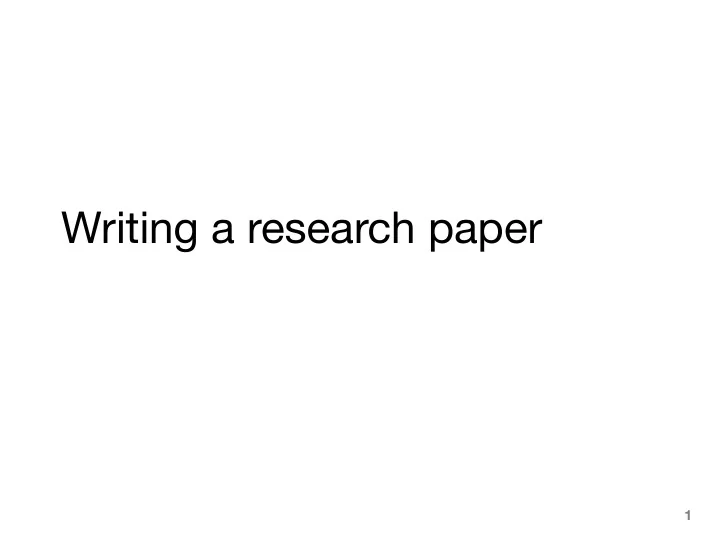

Writing a research paper 1
Organizing a research paper • Decide up front what the point of your paper is and stay focused as you write • Once you have decided on the main point, pick a title • Start with an outline • Use multiple levels of headings (usually 2 or 3) • Don’t ramble! 2
Typical paper organization Abstract - Short summary of paper • Introduction - Motivation (why this work is interesting/important, not your • personal motivation) Background and related work - Sometimes part of introduction, sometimes • two sections Methods - What you did; in a systems paper you may have system design • and evaluation sections instead Results - What you found out • Discussion/Conclusions - May include conclusions, future work, discussion of • implications, etc. References • Appendix - Stuff not essential to understanding the paper, but useful, • especially to those trying to reproduce your results - data tables, proofs, survey forms, etc. 3
Road map Papers longer than a few pages should have a “ road map ” so • readers know where you are going Road map usually comes at the end of the introduction • Tell them what you are going to say, then say it, (and then tell them • what you said) Examples • – In the next section I introduce X and discuss related work. In Section 3 I describe my research methodology. In Section 4 I present results. In Section 5 I present conclusions and possible directions for future work. – Waldman et al, 2001: “This article presents an architecture for robust Web publishing systems. We describe nine design goals for such systems, review several existing systems, and take an in-depth look at Publius, a system that meets these design goals.” 4
Use topic sentences • (Almost) every paragraph should have a topic sentence – Usually the first sentence – Sometimes the last sentence – Topic sentence gives the main point of the paragraph • First paragraph of each section and subsection should give the main point of that section • Examples from Balebako et al, 2015 – In this section, we provide a brief background on policy in the United States regarding smartphone data collection. – Smartphones have characteristics that distinguish them from personal computers (PCs), and impact the harms and concerns from data sharing. 5
Avoid unsubstantiated claims • Provide evidence for every claim you make – Related work – Results of your own experiments • Conclusions should not come as a surprise – Analysis of related work, experimental results, etc. should support your conclusions – Conclusions should summarize, highlight, show relationships, raise questions for future work – Don’t introduce completely new ideas in discussion or conclusion section (other than ideas for future work) – Don’t reach conclusions not supported by the rest of your paper 6
Recommend
More recommend